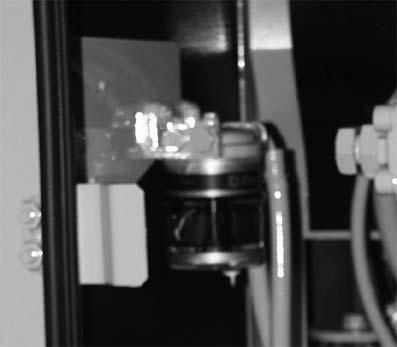
3 minute read
COLD WEATHER OPERATION
from Komatsu Hydraulic Excavator PC160-6K PC180LC-6K PC180NLC-6K Operation Manual SN 34014, 34026 and up
PRECAUTIONS FOR LOW TEMPERATURE
If the temperature becomes low, it becomes difficult to start the engine, and the coolant may freeze, so do as follows.
FUEL AND LUBRICANTS
Change to fuel and oil with low viscosity for all components.
For details of the specified viscosity, see “USE OF FUEL, COOLANT AND LUBRICANTS ACCORDING TO AMBIENT TEMPERATURE” on page169.
COOLANT
WARNING Keep antifreeze fluid away from an open flame. Never smoke when using antifreeze.
NOTICE
● Never use methanol, ethanol or propanol based anti-
freeze.
Absolutely avoid using any water leak preventing agent irrespective of whether it is used independently or mixed with an antifreeze.
Do not mix one antifreeze with a different brand. For antifreeze mixture requirements, see “USE OF FUEL, COOLANT AND LUBRICANTS ACCORDING TO AMBIENT TEMPERATURE” on page169.
Use a Permanent Antifreeze (ethylene glycol mixed with corrosion inhibitor, antifoam agent, etc.) meeting the standard requirements as shown below. With permanent antifreeze, no change of coolant is required for a year. If it is doubtful that an available antifreeze meets the standard requirements, ask the supplier of that antifreeze for information. Standard requirements for permanent antifreeze
SAE J1034
FEDERAL STANDARD O-A-548D
REMARK
Where no permanent antifreeze is available, an ethylene glycol antifreeze without corrosion inhibitor may be used only for the cold season. In this case, clean the cooling system twice a year (in spring and autumn). When refilling the cooling system, add antifreeze in autumn, but do not add any in spring.
BATTERY
WARNING To avoid gas explosions, do not bring fire or sparks near the battery.
Battery electrolyte is dangerous. If it gets in your eyes or on your skin, wash it off with large amounts of water, and consult a doctor.
When the ambient temperature drops, the capacity of the battery will also drop. If the battery charge ratio is low, the battery electrolyte may freeze. Maintain the battery charge as close as possible to 100%, and insulate it against cold temperature so that the machine can be started easily the next morning.
REMARK
Measure the specific gravity and calculate the rate of charge from the following conversion table.
Temp. of fluid
Rate of charge
20°C 0°C -10°C -20°C
100% 1.28 1.29 1.30 1.31
90% 1.26 1.27 1.28 1.29
80% 1.24 1.25 1.26 1.27
75% 1.23 1.24 1.25 1.26
PRECAUTIONS AFTER COMPLETION OF WORK
To prevent mud, water, or the undercarriage from freezing and making it impossible for the machine to move the following morning, always observe the following precautions.
Mud and water on the machine body should be completely removed. This is to prevent damage to the seal caused by mud or dirt getting inside the seal with frozen drops of water.
Park the machine on hard, dry ground. If this is impossible, park the machine on wooden boards. The boards help protect the tracks from being frozen in soil and the machine can start next morning.
Open the drain valve and drain any water collected in the fuel system to prevent it from freezing.
As the battery capacity drops markedly in low temperatures, cover the battery or remove it from the machine, keep it in a warm place, and install it again the next morning.
If electrolyte level is found low, add distilled water in the morning before beginning work. Do not add the water after the day’s work so as to prevent fluid in the battery from freezing in the night.
AFTER COLD WEATHER
When season changes and the weather becomes warmer, do as follows.
Replace the fuel and oil for all parts with oil of the viscosity specified.
For details, see “USE OF FUEL, COOLANT AND LUBRICANTS ACCORDING TO AMBIENT TEMPERATURE” on page169.
If for any reason permanent antifreeze cannot be used, and an ethyl glycol base antifreeze (winter, one season type) is used instead, or if no antifreeze is used, drain the cooling system completely, then clean out the inside of the cooling system thoroughly, and fill with fresh water.



